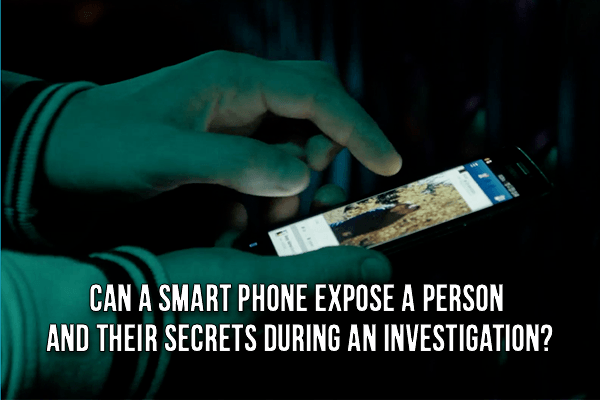Can a smart phone expose a person and their secrets during an investigation?

How much do you trust your smart phone that is with you 24 hours a day?
You use it to make phone calls, send text messages, check your email, post on Facebook, check in at restaurants and events, use GPS navigation to get around, and so much more. Not only that, but your phone can also keep track of where you are all the time.
There are over 225 million Americans that own a smart phone. They have become a digital extension of who we are, what we do, and where we go. In today’s world, most people would find it difficult to get through the day without using their smartphone.
Now, with that in mind, let’s talk about how this information would be used during an investigation.
We (in the private industry) do not have access to obtaining phone records, track phone movement from cell tower to cell tower, or the ability to trace calls and text messages, without meeting certain criteria or obtain specific permissions. What we do have, is the user of that phone and the common methods in which they communicate with it, such as social media apps, their camera, and GPS location services.
Most people always have their phone on and with them at all time, so they can stay connected and in tune to the rest of the world while on the go. In today’s culture, we utilize our phones to keep in the loop with high demands of our professional careers, keep in-touch with family and friends, and to simply post about our day to day life. Some will post a picture or video of an event they are attending, tweet about how good or bad their day is going at work, check in at the restaurant or club they are at showing their location, and so on. A particular interest in the world of investigations, people will even post about future and upcoming events they plan on being involved with. Key Note: This type of data now has become public information once it has been posted and shared.
There are several pieces of valuable information we can now obtain on our person of interest to use in our investigation.
- We can see if this person attended or participated any type of event that could have led to an injury. For example, a concert or ball game.
- We can monitor their posts or tweets they may share related to work activities and uncover personal details or comments about an incident they were involved in.
- We can learn what locations they visit frequently to identify any patterns in their regular routines, which can be important information during a surveillance or the planning of surveillance.
- We can uncover photos or videos that were taken at the scene of an accident that they shared online, or of their activities they have been involved in since the date of loss.
- We have even been able to “real time” track a subject that was “checking in” from their smart phone as they went from place to place shopping during the holiday season.
Below is an actual map of a “check in” map location inside a social media profile. Each icon indicates a check in. If clicked, the icon will actually provide the date, time, exact name, and address of the location that was “checked in” with the smart phone.

These are just a few examples of the many avenues of data that can be exposed and utilized for informational purposes for your investigation simply from your subject using their smartphone devices. We all forget that your smartphone can be like a tracking device, exposing where you are and what you do each day.
Combining the information people share using their smart phones, and the data that can be researched and collected online, can create a goldmine of intelligence to benefit you on an investigation. Open Source Media information obtained from any platform can turn the odds in your favor if you know how to look for it and analyze it correctly.
